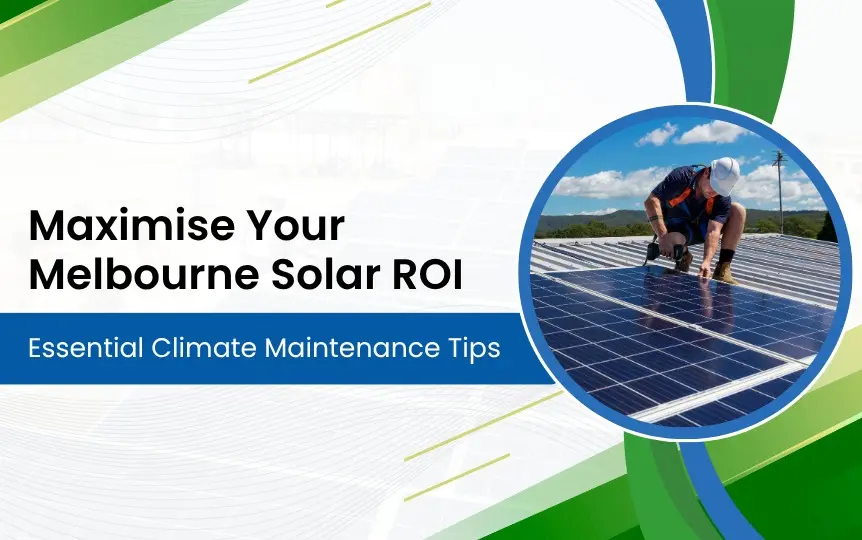Switching to solar today is about more than sustainability. It is also about running a smarter, more cost-efficient business. With energy bills climbing, customers paying closer attention, and new government incentives across Australia, commercial solar has become a practical investment for companies of all sizes.
What many business owners don’t realise is that the savings don’t come from panels alone. A significant part of the return depends on the understanding of rebates and incentives available and knowing how to make the most of them. To get the best value from a solar installation, look closely at the government programmes to leverage rebates and get maximum ROI.
How Commercial Solar ROI Matters More
Electricity is more than a routine expense. For many companies, it grows steadily with each billing cycle and has become the third biggest operating cost after wages and rent. This is why solar energy should be seen not only as an environmental choice but as a practical financial strategy.
When you add available government rebates into the calculation, the payback period often falls between three and five years. Once those initial costs are recovered, every unit of solar energy you generate contributes directly to long-term savings. The key is to make sure you capture every possible rebate, credit, and incentive so that your investment pays back faster and continues delivering value year after year.
The Government’s Role
Australia has both the climate and the policy drive to make solar power part of everyday business. Federal and state governments have introduced a range of rebates, incentives, and certificates that help reduce the upfront costs for companies looking to invest in solar.
These support schemes can significantly cut installation expenses, in some cases lowering the price by tens of thousands of dollars. Without this assistance, many businesses might delay or avoid making the switch. With it, the financial case for solar becomes far stronger and easier to justify. Let’s explore some of the major programs currently shaping commercial solar ROI.
Small-Scale Technology Certificates (STCs): The Upfront Discoun
Think of STCs as solar’s version of a trade-in bonus. They’re part of the Renewable Energy Target (RET) and act as an upfront rebate on your system.
Here’s how they work:
- For every megawatt-hour of electricity your system is expected to generate until 2030, you’re awarded certificates.
- These certificates have a market value and can be sold to electricity retailers who need them to meet clean energy obligations.
- Your installer usually handles the paperwork, applying the STC value as an immediate discount on your system price.
Large-Scale Generation Certificates (LGCs): The Long-Term Payout
Think of LGCs as solar’s version of an ongoing return. They’re part of the Large-Scale Renewable Energy Scheme (LRET) and apply to systems above 100kW.
Here’s how they work:
- For every megawatt-hour of electricity your system produces, you’re awarded certificates.
- These certificates carry a market value and can be sold to electricity retailers who need them to meet renewable energy obligations.
- Instead of an upfront discount, LGCs deliver continuing financial benefits for the lifetime of your system.
State-Based Rebates: The Local Advantage
While federal schemes make the biggest splash, state governments add their own incentives into the mix. Depending on where your business is located, you may be eligible for:
- Feed-in Tariffs (FiTs): Payments for exporting unused solar power back to the grid.
- Battery Rebates: Subsidies covering up to 30% of the cost of battery storage for small businesses in some states.
- Energy Efficiency Grants: Support packages that combine solar with energy-saving upgrades.
The Rise of Virtual Power Plants (VPPs)
A major recent shift in the energy space is the expansion of Virtual Power Plants (VPPs). These systems link together solar panels and battery storage across different sites, creating a network that can share or trade electricity.
For businesses, this means surplus power doesn’t go to waste, but can be shared with other participants or fed back into the grid for additional revenue. For companies that take part, the opportunity is not limited to short-term rebates. A solar system connected to a VPP becomes a working asset, capable of generating income as well as reducing bills.
How to Maximise ROI with Rebates: A Step-by-Step Guide
- Audit Your Energy Needs: Don’t size your system blindly. Get a professional energy audit to understand when and how your business consumes power.
- Match the Right Incentives: Systems under 100kW? Maximise STCs. Over 100kW? Chase LGCs. Adding batteries? Look for state rebates and VPP programs.
- Work with a Trusted Installer: Not all installers have the same expertise with rebate paperwork. Partner with one who knows the ins and outs of government programs so you don’t miss out.
- Plan for the Long Term: Think beyond today’s rebates. LGCs, VPP participation, and energy trading options will shape your ROI for decades.
- Tell Your Story: Once your system is in place, tell people about it. Use your solar adoption in marketing and CSR campaigns as it strengthens brand value and widens the payback beyond dollars and cents.
In ConclusionSolar energy is readily available, the technology is well-established, and government rebates have made adoption more affordable. For Australian businesses, investing in commercial solar is increasingly seen as an essential step rather than an optional choice. So, if you’re ready to maximise your commercial solar ROI, start by exploring the latest government rebates and speaking to a trusted installer who can help you claim them.

